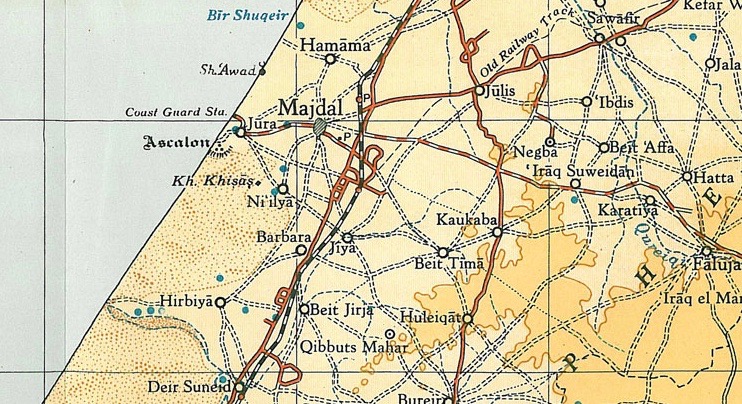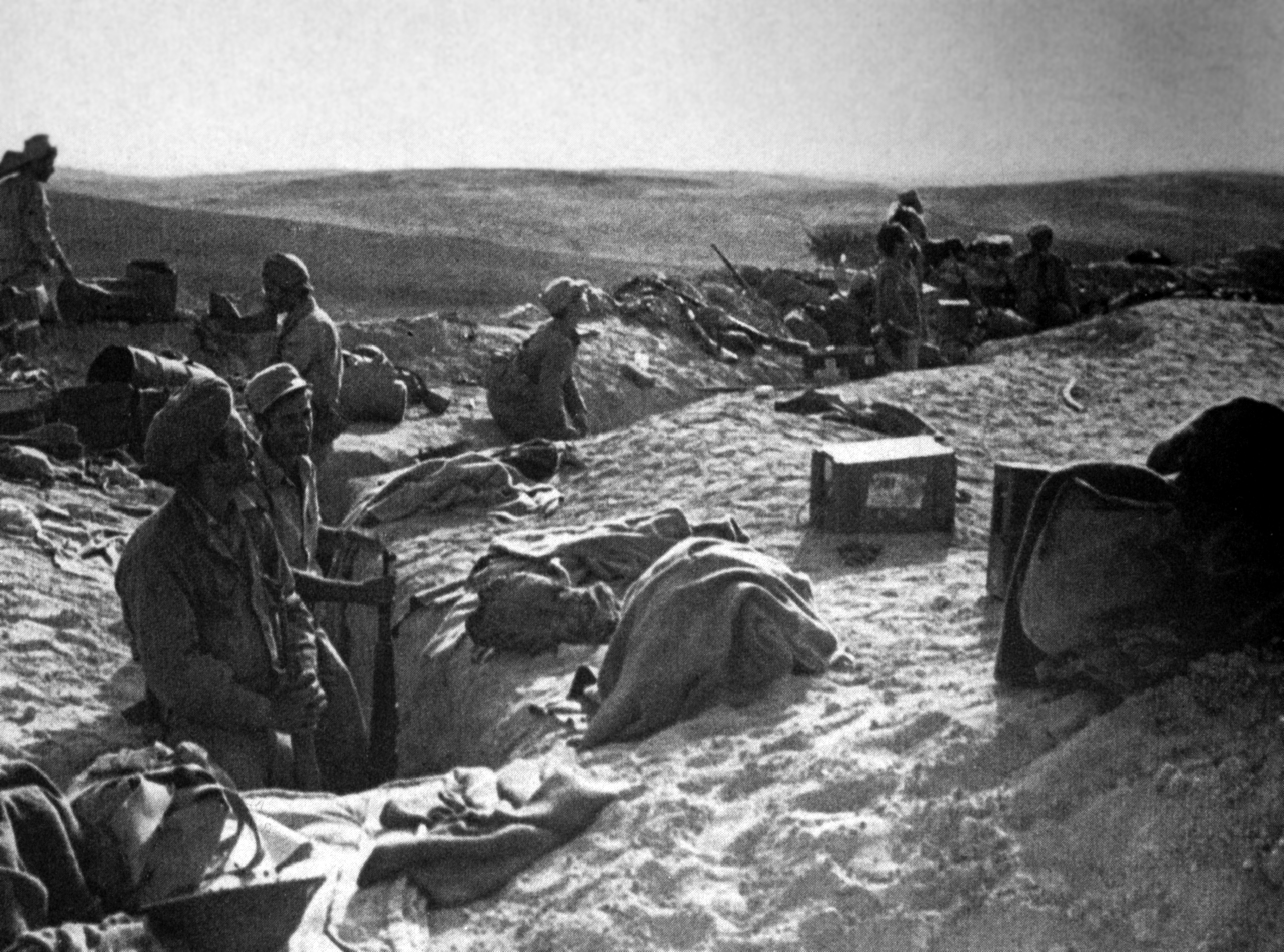Hulayqat on:
[Wikipedia]
[Google]
[Amazon]
Hulayqat was a
119
/ref> An Ottoman village list from about 1870 showed that Hulayqat had a population of 55, with a total of 14 houses, though the population count included men, only. In 1883, the PEF's ''
 In the 1922 census of Palestine, conducted by the British Mandate authorities, ''Hukiqat'' had a population of 251 inhabitants, all Muslims, increasing in the 1931 census to 285, still all Muslims, in 61 houses.Mills, 1932, p
In the 1922 census of Palestine, conducted by the British Mandate authorities, ''Hukiqat'' had a population of 251 inhabitants, all Muslims, increasing in the 1931 census to 285, still all Muslims, in 61 houses.Mills, 1932, p
3
/ref> In the 1945 statistics Huleiqat had a population of 420 Muslims, with a total of 7,063 dunams of land, according to an official land and population survey. Of this, 115 dunams were used for plantations and irrigable land, 6,636 for cereals, while they had 18 dunams as built-up land.
In 1947, an oil drilling project commenced in Hulayqat employing 300 Arab workers.
In the 1945 statistics Huleiqat had a population of 420 Muslims, with a total of 7,063 dunams of land, according to an official land and population survey. Of this, 115 dunams were used for plantations and irrigable land, 6,636 for cereals, while they had 18 dunams as built-up land.
In 1947, an oil drilling project commenced in Hulayqat employing 300 Arab workers.
385
/ref> and some of the villagers returned to their homes. It was finally captured on 19 October by the Giv'ati Brigade during According to the Palestinian historian
According to the Palestinian historian
Welcome To Hulayqat
Hulayqat
IAAWikimedia commons
from the
Palestinian Arab
Palestinians ( ar, الفلسطينيون, ; he, פָלַסְטִינִים, ) or Palestinian people ( ar, الشعب الفلسطيني, label=none, ), also referred to as Palestinian Arabs ( ar, الفلسطينيين العرب, label=non ...
village in the Gaza Subdistrict. It was depopulated during the 1947–1948 Civil War in Mandatory Palestine. It was located 20.5 km northeast of Gaza.
History
Hulayqat had numerous khirbas. Artifacts include pieces ofmarble
Marble is a metamorphic rock composed of recrystallized carbonate minerals, most commonly calcite or dolomite. Marble is typically not foliated (layered), although there are exceptions. In geology, the term ''marble'' refers to metamorphose ...
and pottery
Pottery is the process and the products of forming vessels and other objects with clay and other ceramic materials, which are fired at high temperatures to give them a hard and durable form. Major types include earthenware, stoneware and ...
as well as cisterns and a pool.Khalidi, 1992, p. 104
Ottoman era
In 1838, in the Ottoman era, ''Huleikat'' was noted as village in the Gaza district.Robinson and Smith, 1841, vol 3, Appendix 2, p.119
/ref> An Ottoman village list from about 1870 showed that Hulayqat had a population of 55, with a total of 14 houses, though the population count included men, only. In 1883, the PEF's ''
Survey of Western Palestine
The PEF Survey of Palestine was a series of surveys carried out by the Palestine Exploration Fund (PEF) between 1872 and 1877 for the Survey of Western Palestine and in 1880 for the Survey of Eastern Palestine. The survey was carried out after the ...
'' described it as a "small village on a flat slope, with a high sandy hill to the west. It has cisterns and a pond, with a small garden to the west.”
British Mandate era
 In the 1922 census of Palestine, conducted by the British Mandate authorities, ''Hukiqat'' had a population of 251 inhabitants, all Muslims, increasing in the 1931 census to 285, still all Muslims, in 61 houses.Mills, 1932, p
In the 1922 census of Palestine, conducted by the British Mandate authorities, ''Hukiqat'' had a population of 251 inhabitants, all Muslims, increasing in the 1931 census to 285, still all Muslims, in 61 houses.Mills, 1932, p3
/ref>
 In the 1945 statistics Huleiqat had a population of 420 Muslims, with a total of 7,063 dunams of land, according to an official land and population survey. Of this, 115 dunams were used for plantations and irrigable land, 6,636 for cereals, while they had 18 dunams as built-up land.
In 1947, an oil drilling project commenced in Hulayqat employing 300 Arab workers.
In the 1945 statistics Huleiqat had a population of 420 Muslims, with a total of 7,063 dunams of land, according to an official land and population survey. Of this, 115 dunams were used for plantations and irrigable land, 6,636 for cereals, while they had 18 dunams as built-up land.
In 1947, an oil drilling project commenced in Hulayqat employing 300 Arab workers.
1948, aftermath
The village was first captured by the Israeli army on 13 May duringOperation Barak
Operation Barak ( he, מבצע ברק, ''Mivtza Barak'', lit. ''Operation Lightning'') was a Haganah offensive launched just before the end of the British Mandate in Palestine. It was part of Plan Dalet. Its objective was to capture villages Nor ...
and depopulated. On 8 July, it was retaken by the Egyptian army. A well-fortified battalion of the 4th Brigade was stationed there later reinforced by more troops.Tal, 2004, p385
/ref> and some of the villagers returned to their homes. It was finally captured on 19 October by the Giv'ati Brigade during
Operation Yoav
Operation Yoav (also called ''Operation Ten Plagues'' or ''Operation Yo'av'') was an Israeli military operation carried out from 15–22 October 1948 in the Negev Desert, during the 1948 Arab–Israeli War. Its goal was to drive a wedge between th ...
.
 According to the Palestinian historian
According to the Palestinian historian Walid Khalidi
Walid Khalidi ( ar, وليد خالدي, born 1925 in Jerusalem) is an Oxford University-educated Palestinian historian who has written extensively on the Palestinian exodus. He is a co-founder of the Institute for Palestine Studies, establish ...
, the ruin of the village in 1992 was partially forested with sycamore, Christ's-thorn trees and cactus. One of the old roads had been paved.
See also
* Battles of the Separation CorridorReferences
Bibliography
* * * * * * * * * * * *External links
Welcome To Hulayqat
Hulayqat
Zochrot
Zochrot ( he, זוכרות; "Remembering"; ar, ذاكرات; "Memories") is an Israeli nonprofit organization founded in 2002. Based in Tel Aviv, its aim is to promote awareness of the Palestinian ''Nakba'' ("Catastrophe"), including the 1948 Pa ...
*Survey of Western Palestine, Map 20IAA
from the
Khalil Sakakini Cultural Center
Khalil Sakakini Cultural Center () is a leading Palestinian arts and culture organization that aims to create a pluralistic, critical liberating culture through research, query, and participation, and that provides an open space for the community ...
{{Palestinian Arab villages depopulated during the 1948 Palestine War
Arab villages depopulated during the 1948 Arab–Israeli War
District of Gaza